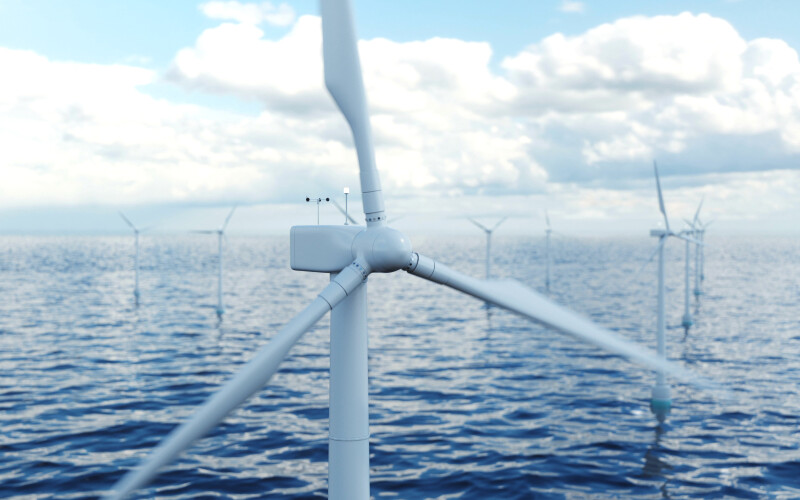Fresh off a sharp setback on long-planned offshore wind projects, New York Gov. Kathy Hochul’s administration announced three new contracts for 4,032 megawatts of offshore generation capacity, part of what it called “the largest state investment in renewable energy in United States history.”
The “conditional awards” include three offshore wind contracts out of the state’s latest solicitation:
- Attentive Energy One (1,404 MW) developed by TotalEnergies, Rise Light & Power and Corio Generation. The project includes a novel fossil repurposing plan in Queens, which seeks to retire fossil fuel power generation in the heart of New York City and transition the current workforce to clean energy jobs.
- Community Offshore Wind (1,314 MW) developed by RWE Offshore Renewables and National Grid Ventures. The project includes a new grid interconnection being developed by Con Edison in downtown Brooklyn, made possible by the Public Service Commission Order Approving Cost Recovery for Clean Energy Hub to maximize delivery of clean electricity into New York City.
- Excelsior Wind (1,314 MW) developed by Vineyard Offshore (Copenhagen Infrastructure Partners). The project includes proposed cable route options providing energy deliverability to Long Island, leveraging the electric grid expansion provided through the Long Island Public Policy Transmission Need outcome.
“New York continues to set the pace for our nation’s transition to clean energy,” Governor Hochul said in announcing the new plans. “Today, we are taking action to keep New York’s climate goals within reach, demonstrating to the nation how to recalibrate in the wake of global economic challenges while driving us toward a greener and more prosperous future for generations to come.”
It's part of a drive under state law to have 70% of New York State power coming from renewable sources by 2030. That goal was dealt a blow Oct. 12 when the state Public Service Commission turned down offshore wind developers’ petitions to win a boost up in their future power purchase agreements to cover their escalating costs.
The latest offshore wind offerings are included in a package of 22 land-based renewable energy projects; the latter include proposals to repower six old onshore wind turbine arrays in upstate New York. In all the plan has a total nameplate full potential for 6.4 gigawatts, “enough to power 2.6 million New York homes and deliver approximately 12% of New York’s electricity needs once completed,” according to the governor’s office.
The Oct. 12 decision by the Public Service Commission rejected calls from developers Ørsted and Eversource to be granted a 27% increase for power prices from their planned Sunrise Wind project. Joint venture partners Equinor and BP wanted 54% more overall for their Empire Wind 1, Empire Wind 2 and Beacon Wind projects. The decision has created uncertainty over whether developers could seek to withdraw from contracts.
It provoked alarm from offshore wind power advocates, and immediate assurances from Hochul that state officials would keep moving forward on renewable energy.
“New York took an important step toward getting the state’s offshore wind industry back on track today with a colossal commitment to three new projects generating over 4 GW of offshore wind energy,” the industry group Business Network for Offshore Wind said Tuesday.
“It’s no secret that New York’s clean energy and offshore wind goals are in doubt after the state’s recent decisions threw uncertainty into the market, and we encourage the state to fulfill its Action Plan by finding paths forward for previously awarded projects and stabilizing the state’s offshore wind industry.”
The Hochul administration says the projects “employ a mix of flexible and innovative transmission designs, including a reduced footprint in transmitting energy from offshore wind projects to New York City through high voltage direct current (HVDC) and adaptable “Meshed-Ready” offshore electrical substations.”
The offshore wind projects are anticipated to enter commercial operation in 2030. According to the governor's office, the average bill impact for customers over the life of the projects will be approximately 2.73%, or about $2.93 per month. The average all-in development cost of the awarded offshore wind projects over the life of the contracts is $96.72 per megawatt-hour.




